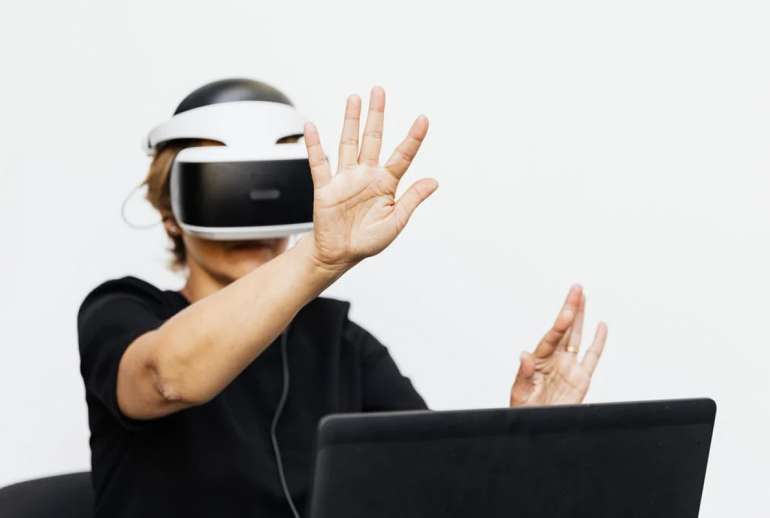The most profound technological shifts often begin with whispered conversations between visionaries. For two years, Jony Ive and Sam Altman have been quietly sketching the future of how humans interact with artificial intelligence. Their collaboration, now formalized through OpenAI’s $6.5 billion acquisition of Ive’s startup io, represents something far more ambitious than another gadget launch. This partnership promises to reshape our daily rituals with technology, moving away from the screen-dominated experiences that have defined the past decade.
Key Takeaways
- OpenAI and Ive’s io Join Forces in $6.5 Billion Deal: OpenAI formalized its partnership with Apple’s former design chief through a major transaction. The 55-person team will develop AI hardware launching in 2026.
- Beyond Screen-Based AI: AI companions will use voice, gesture, and context instead of displays. Devices integrate naturally without smartphone friction.
- Design Philosophy Meets AI: Ive brings Apple’s approach of emotional connection to AI hardware. Focus on objects people enjoy using daily, not specs.
The relationship between these two men began through mutual respect and shared frustration with existing limitations. Ive spent nearly three decades crafting Apple’s most beloved objects, recognizing that current devices create barriers between users and the AI capabilities now at our fingertips. Altman leads the company behind ChatGPT and understands that powerful language models deserve more elegant vessels than smartphone apps and web browsers. Their vision centers on AI “companions” that integrate seamlessly into daily life, devices that understand context without demanding constant attention.
Altman described the ambition to OpenAI employees as creating “100 million AI companions” that could fundamentally change how we work, learn, and create. The first devices from this collaboration are expected to arrive in 2026, marking the beginning of what both men believe will be an entirely new category of personal technology. Yet the timeline suggests careful development rather than rushed release because quality matters more than speed when creating objects meant for intimate daily use.
The Design Genius Behind AI’s Physical Form
Ive’s involvement brings something rarely seen in AI hardware development through his design philosophy that has always emphasized the emotional connection between user and object. Technology becomes an extension of human capability rather than a replacement for it, and this approach becomes particularly relevant when designing devices meant to house artificial intelligence. The physical form must support natural interaction, while materials must feel appropriate for constant handling.
The io team merging with OpenAI includes approximately 55 engineers, scientists, and product developers, many of whom previously worked alongside Ive at Apple. These individuals helped create some of the most tactile and emotionally resonant consumer electronics of the past two decades. Their collective experience spans materials selection, manufacturing precision, and user experience design. But their expertise extends beyond mere technical capability into understanding how objects become beloved through daily interaction.
Emphasizing reducing technological friction rather than adding features sets this collaboration apart from other AI hardware ventures. Current AI interactions require users to navigate complex interfaces, remember specific commands, and adapt their communication style to match software limitations. Ive and Altman envision devices that understand natural human behavior and respond appropriately without requiring users to learn new interaction paradigms.
Luxury in these future devices manifests through the quality of experience rather than precious materials or exclusive availability. True luxury in personal technology appears as seamless integration with existing habits, where frustrating delays disappear and user needs get anticipated without intrusion. These principles guided the development of products like the original iPhone and iPad, and they appear to be driving the design philosophy behind the OpenAI collaboration.
The partnership recreates dynamics from Apple’s most successful era, when Ive frequently credited the Steve Jobs years for teaching him how visionary leadership combined with design excellence could create objects that people genuinely love using. His collaboration with Altman appears to recreate that creative tension where ambitious technical goals meet refined user experience without either dominating. Physical interaction with these AI companions will likely emphasize intuitive gestures and natural communication patterns that feel immediately familiar to new users.
Beyond Screens and Into Daily Ritual
The promise of moving “beyond screens” reflects a fundamental reimagining of how intelligence should exist within personal space. Current AI interactions tie users to displays, adding another layer of visual demands to lives already saturated with screen time. Ive and Altman envision AI companions that respond to voice, gesture, and contextual awareness, where visual attention becomes optional rather than mandatory.
This approach acknowledges that valuable technology often becomes invisible during use. The best everyday objects fade into the background, enabling activities rather than demanding focus, while a well-designed AI companion enhances conversation and facilitates learning. Creative work gets support without the device becoming the center of attention because presence without intrusion defines the goal.
Daily carry considerations become paramount when designing AI companions meant for constant presence. Weight distribution influences comfort during extended wear, while pocket compatibility determines whether users will actually carry these devices. Durability under real-world conditions determines long-term satisfaction, as materials chosen affect both perception and practicality. The shape of buttons or touch surfaces influences thousands of daily interactions, while even speaker sound quality contributes to the overall experience.
Battery life and charging behavior represent crucial aspects of daily integration that current devices often handle poorly. AI companions designed for seamless daily use must handle power efficiently while providing clear, non-intrusive feedback about energy status. Charging becomes a natural pause rather than an interruption when devices understand usage patterns and adapt accordingly.
Social implications require careful consideration because these products must feel appropriate across diverse settings. Professional environments demand discretion, while social gatherings require devices that enhance rather than interrupt human connection. The design challenge involves creating objects that enhance human connection rather than replacing it, supporting natural interaction patterns rather than imposing new social protocols.
The Luxury of Effortless Intelligence
True luxury in AI hardware manifests as eliminating technological friction from daily activities rather than ostentatious display of advanced features. When intelligence becomes as accessible as glancing at a watch or reaching for a pen, it transforms from novelty into necessity through consistent reliability and thoughtful design. This transformation requires hardware that prioritizes reliability, responsiveness, and intuitive operation above flashy features.
The collaboration between Ive and Altman suggests focusing on premium materials and manufacturing techniques that support long-term daily use rather than impressive launch specifications. Luxury objects earn their status through consistent performance over the years as they develop patina and character through use. This philosophy applies equally to AI companions, which must maintain usefulness and appeal through extended daily interaction.
Personalization capabilities in these devices will likely extend beyond software customization into physical adaptation that reflects individual use patterns. AI companions designed with this principle might offer subtle customization options that allow each device to reflect its user’s preferences and usage patterns without requiring complex configuration. Adaptation happens naturally through use rather than through settings menus.
The emotional value of owning and using these AI companions will depend on their ability to enhance user capabilities without creating dependency or anxiety. The best luxury objects provide confidence and enable achievements that would be difficult or impossible without them, while maintaining appropriate boundaries. AI companions following this principle should make users feel more capable, creative, and connected rather than dependent on technology.
The Promise of Transformed Daily Experience
Manufacturing these devices will require balancing multiple complex requirements simultaneously without compromising any single aspect. Processing power for AI operations must coexist with energy efficiency for all-day use, while durability for daily carry must combine with aesthetic appeal for long-term satisfaction. Every component must serve multiple purposes while maintaining reliability across all functions.
The development timeline suggests careful attention to refining both hardware and software before public release rather than rushing to market with incomplete products. AI companions designed for intimate daily use require higher initial reliability standards than devices intended for occasional interaction because trust takes time to build but moments to destroy. Quality control and testing protocols will likely exceed typical consumer electronics standards given the intimate nature of their intended use.
The collaboration between Jony Ive and Sam Altman represents more than another technology partnership in an industry filled with fleeting alliances. It embodies a vision of artificial intelligence that enhances rather than complicates human experience through thoughtful design and careful implementation. Their shared commitment to creating objects that people genuinely enjoy using daily positions this venture as potentially transformative.
Success will be measured not in technical specifications or market share, but in the quality of daily experiences these AI companions enable for millions of users. If users find themselves more creative, more informed, and more connected to the people and activities they value, then the ambitious goals outlined by both men will have been achieved. The future of personal technology may well be shaped by these AI companions that promise to bring intelligence into daily life without the friction and frustration of current interfaces.



